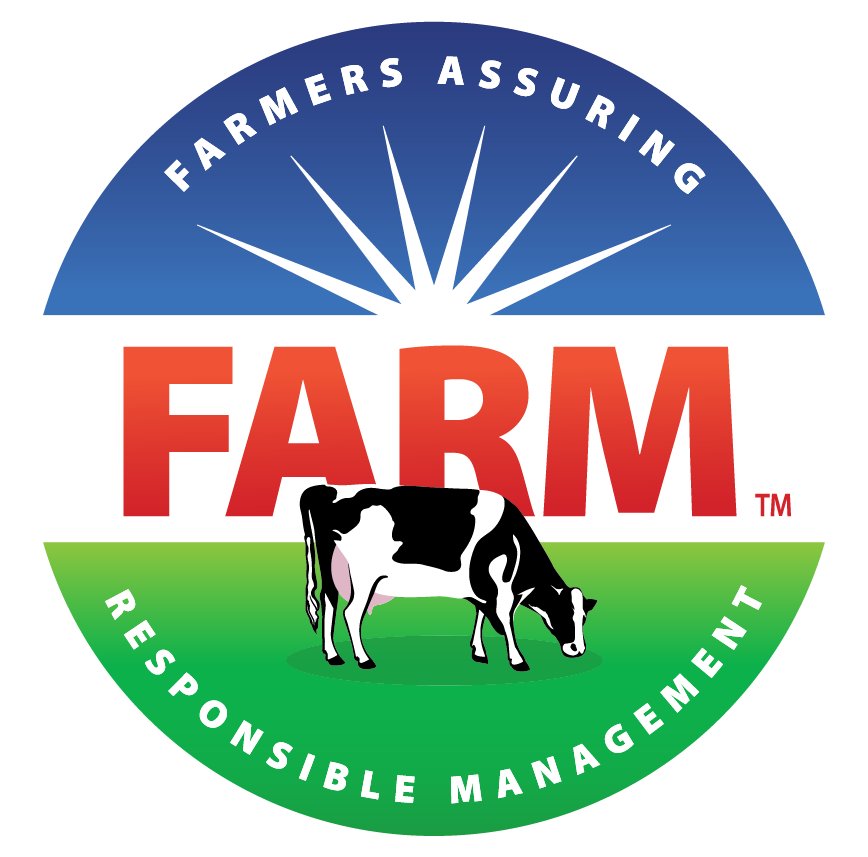First, some background. How long have you been involved in the agriculture – and specifically dairy—industry?
I have been involved in the dairy industry for 34 years, having installed and serviced milking equipment for 10 years. My wife and I ran a 50-cow herd for 25 years. Now, the next generation has joined the farm. My daughter milks a smaller herd of cows and works with my wife to run a custom heifer-raising operation. I have been employed with Land O’ Lakes, Inc., as an FARM Evaluator for the last six years.
In the simplest terms, explain to your average consumer what you do as a FARM Evaluator.
My job is to work with dairy producers to assure consumers that all cattle on dairies are living and receiving the best quality of life possible. By asking the producer a list of questions and then observing all cattle on the farm, any weak animal care issues are identified. From there, I work with the farmer to improve these areas. I will often bring in outside consultants to help where needed.
Walk me through a typical day as a FARM Evaluator. How many hours does it take?
I work with a wide variety of farms. I work with farms with as large as 1,000-2,000 cows, as well as dairies milking 15 cows. Facilities range just as much – from large parlor/freestall barns to robots to small tie stall barns where they milk by hand. Because of this, time spent on the farm varies widely. An average visit runs 2-3 hours. Typically, an appointment is set up ahead of time. Once I arrive, I go through the interview questions with the producer. Then I ask for the total number of cattle on the farm, broken down by age groups. Walking through all of the barns and pastures is next, observing and scoring the cattle as I go. Once this is done, I write a report and share this with the farmer. If there are any areas that need improving, I work with the farmer to come up with an action plan to correct any issues.
What are some of the overall benefits of this job?
Working with such a variety of farms is very interesting to me. Something I enjoy is asking questions when I see something a farmer has done to improve his operation. I ask them how they like it, what they don’t like and how they would do it differently if they could do it over again. Then, on other farms, I am able to help other producers improve their operations by providing them real-life examples of what works and what doesn’t. Producers seem to really appreciate this.
The challenges?
Probably the biggest challenge is working with producers who are cash strapped for whatever reason. Sometimes I see an area that needs a major renovation and the producer is just not able to make a large investment at that time. I then work with the farmer and sometimes consultants to see how we can improve this area in small stages. Maybe at first for little-to-no cost, just a change in management practices. Sometimes having a new set of eyes looking at a problem can help a producer to think out of the box.
Tell me about a particularly rewarding experience while on the job.
During the first round of FARM, I did an evaluation on a farm that had recently moved from a tiestall/pasture facility to a robot/freestall barn facility. While in the tiestall barn, they were trimming cows feet once a year (pasturing cows only needed to trim once a year). Moving to the freestall barn, I noticed they were having a lot of lameness issues. After talking to the producer, I suggested they begin trimming feet at least twice a year. When I returned to the farm for the second round of FARM, the producer informed me that when I was there for the first round, he had 15 cows on his cull list – 11 of them for lameness issues. Since then, they were able to get a foot trimmer and turned all 11 cows around! Stories like this makes me feel I am able to make a difference for the farmers I work with.
What is one thing you often see during your evaluations that you think could use improving?
Young cattle care is probably the biggest area of improvement. That’s not to say everyone is doing a poor job in this area. Often there are a several small things that can be done to improve young cattle care. Routine foot care on mature cattle would be a close second.
As someone who works behind on the scenes, on the farm, what is one thing you would like to tell consumers who are concerned about animal care?
Often times the consumer is told that farmers are all about the money. This could not be further from the truth. There are much easier ways to make a living. No matter what size the operation, dairy farming is a 24/7 job. More than that, it is a lifestyle. Farmers are very compassionate about what they do. Whether it’s caring for a sick cow in the middle of the night or helping a newborn calf drink its first drink (and when the farmer has the flu and should be in bed), animal care and making sure consumers get the safest, freshest product is at the top of their list all the time.
